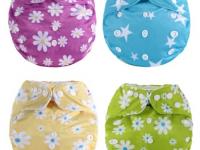Interesting information and FAQs about Pearls Jewelry

Interesting information and FAQs about Pearls Jewelry
Are saltwater pearls better than freshwater pearls? It depends on who you ask, but many pearl experts today agree that freshwater cultured pearls can rival the beauty of their saltwater cousins. Due to improvements in culturing techniques, freshwater pearl farmers are producing beautiful, round, lustrous pearls that are a vast improvement over the wrinkled, rice-krispie-shaped gems that typified the freshwater pearl crop of the not-so-distant past. Produced mainly in China, freshwater pearls jewelry are often nucleated, or implanted, with mantle tissue only (rather than a mother-of-pearl bead). Because they do not contain a starter bead, tissue-nucleated freshwater pearls are 100% nacre. This gives them a beautiful luster and a durable surface that won easily flake or peel to reveal the inner bead. By contrast, pearls that are bead-nucleated and harvested too soon often have only a thin coating of nacre that will flake or peel. This is a major problem: Unlike many other gemstones, pearls cannot be polished back to perfection.Freshwater cultured pearls come in many beautiful natural pastel colors including cream, white, yellow, orange, pink and lavender. (Universally flattering lavender pearls are very popular right now.) White pearls are bleached to enhance their natural shine. Black freshwater cultured pearls are treated with dye or heat to produce their inky color. Overall, freshwater pearls are more plentiful than other pearl types, thus they are generally more affordable. Are South Sea pearls really golden?Yes. Pearls produced in the aptly named gold-lipped?oyster (P. maxima) can be a gorgeous creamy yellow, referred to as golden?in the trade. (The silver-lipped variety of P. maxima produces beautiful silver or white pearls.) Grown in the South Seas rich stretch from the southern coast of Southeast Asia to the northern coast of Australia seas pearls are grown in one of the biggest oysters used in pearl culturing. Because they can accept a larger bead and secrete nacre faster than their smaller counterparts, these big oysters produce large pearls of exceptional luster and beauty. South Sea pearls?thick coating of nacre gives the gems a wonderful luster, or glow, that appears to come from deep within the pearl. The warm waters, abundant food supply and low pollution levels of the South Seas also help these oysters produce beautiful cultured pearls. Although Australia produces 60% of the world South Sea cultured pearls, Indonesian farmers work more with the gold-lipped oyster, and thus produce more golden pearls. The silver-lipped variety produces equally beautiful pearls that come in white to silver and often have ros? blue or green overtones. Aside from giving them a light wash, pearl farmers do not treat South Sea pearls after harvest.


